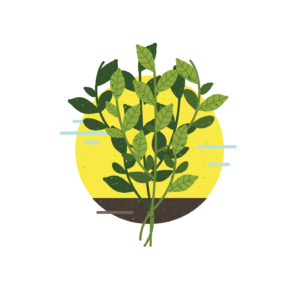AUTUMN FEEDING PROGRAM TIPS AND INFORMATION

Fall is back to school time and peak harvest season for Illinois! Whether you’re ready to harvest the fruits of a school garden or purchasing veggies from local farms, these autumn tips and information can help you celebrate Harvest of the Month with flying (fall) colors.
Amplify your autumn celebrations by joining Harvest of the Month and the Great Apple Crunch on the second Thursday in October!
OCTOBER BOO-TACULAR VEGGIE EXPERIENCE!
It’s October! This is one of the most festive months of the school year and an easy month to step up your Harvest of the Month activities.
 Feature Local Autumn Potatoes
Feature Local Autumn Potatoes
The potato is the perfect blank canvas for creating a Spooktacular Havest of the Month event and capitalizing on the fun in October!
Try a mixed harvest recipe like Southwest Sunrise Oven Potatoes featuring both red and sweet potatoes for the colors and flavors of autumn.
Try serving “Mummified Mashed Potatoes” or “Mummy Food Spuds” using local/regional potatoes in your mashed potato recipe. Decorate with adorable and inexpensive Potato Mummies on the service lines! These humorous spuds require a little first-aid gauze, and a couple googly eyes from your local craft store to get your kids giggling through the meal lines.


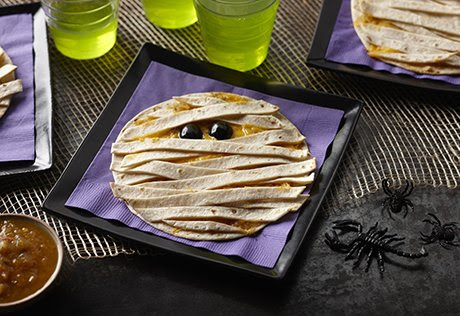 You can serve up seasonal fun and local foods at breakfast or lunch!
You can serve up seasonal fun and local foods at breakfast or lunch!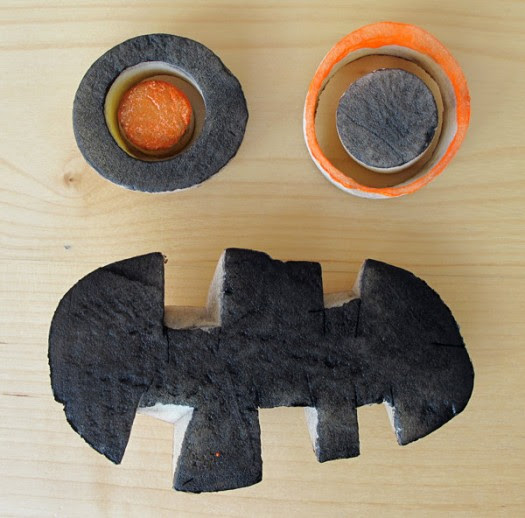

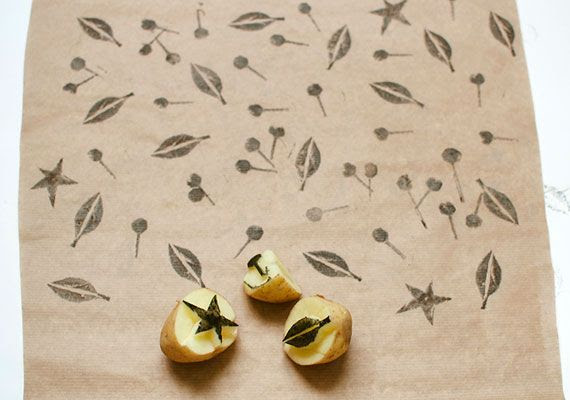 You can create Halloween potato stamps as an art project with young children to make cafeteria signage and posters, too.
You can create Halloween potato stamps as an art project with young children to make cafeteria signage and posters, too.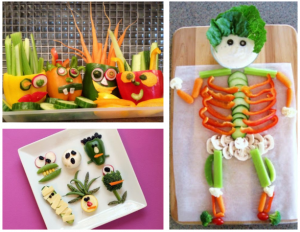
 More recipes for October!
More recipes for October!JOHNNY APPLESEED, A HERO OF AMERICAN FOLKLORE! 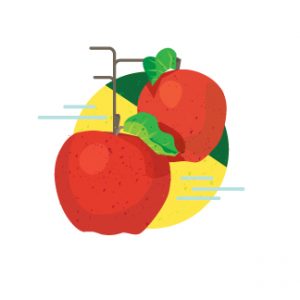
A hero of American folklore, Johnny Appleseed was said to be a barefoot wanderer with a tin pot hat, and a sack of apples, so he might leave the start of trees everywhere he went. But unlike his tall tale colleagues Paul Bunyan and Babe the Blue Ox, Appleseed’s story was based on a real man. His name was John Chapman, and his real life was far richer and more interesting than his legend.
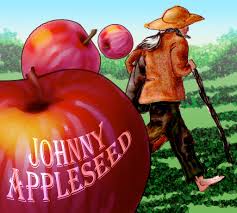
You can still visit one of his trees in Nova, Ohio. This site is home to a 176-year-old tree, the last known to be planted by Johnny Appleseed himself. It grows tart green apples, which are now used for applesauce and baking in addition to cider making. While Chapman might be glad to see his seeds still bearing fruit, he’d likely be sad to hear this tree is a noted bud source for grafting new apple trees. You can read more about John Chapman at: MentalFloss.com.
Finding Local Storage Apples in our region:
Regional/local apples are harvested in the fall and are a good winter storage crop grown in Illinois, Wisconsin, Michigan, Minnesota, Indiana, and in Missouri, (for our western and southern Illinois schools!). There are two companies selling sliced regional apples (when available) to schools: Richland Hills Farms in Wisconsin and Peterson Farms in Michigan. Check with your produce distributor to order. If you cannot get these pre-cut products try contacting the companies directly to locate a distributor near you.
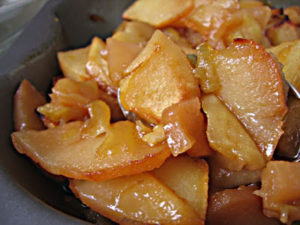
- Several studies have looked at the effect of apples on risk factors for heart disease. One of the studies, done in hamsters, showed that apples can reduce total cholesterol levels and lead to drastic reductions (48%) in plaque buildup inside the arteries. If these animal studies were to apply to humans, it would mean that apples could be highly useful in helping to prevent cardiovascular disease (heart attacks and strokes).
- Apples contain many vitamins and minerals, but not in high amounts. However, apples are usually a good source of vitamin C.
- Vitamin C: Also called ascorbic acid, vitamin C is a common antioxidant in fruits. It is an essential dietary nutrient that has many important functions in the body (12).
- Potassium: The main mineral in apples. High intake of potassium may have beneficial effects on heart health.
- The pectin in apples is a probiotic, providing food for friendly gut bacteria.
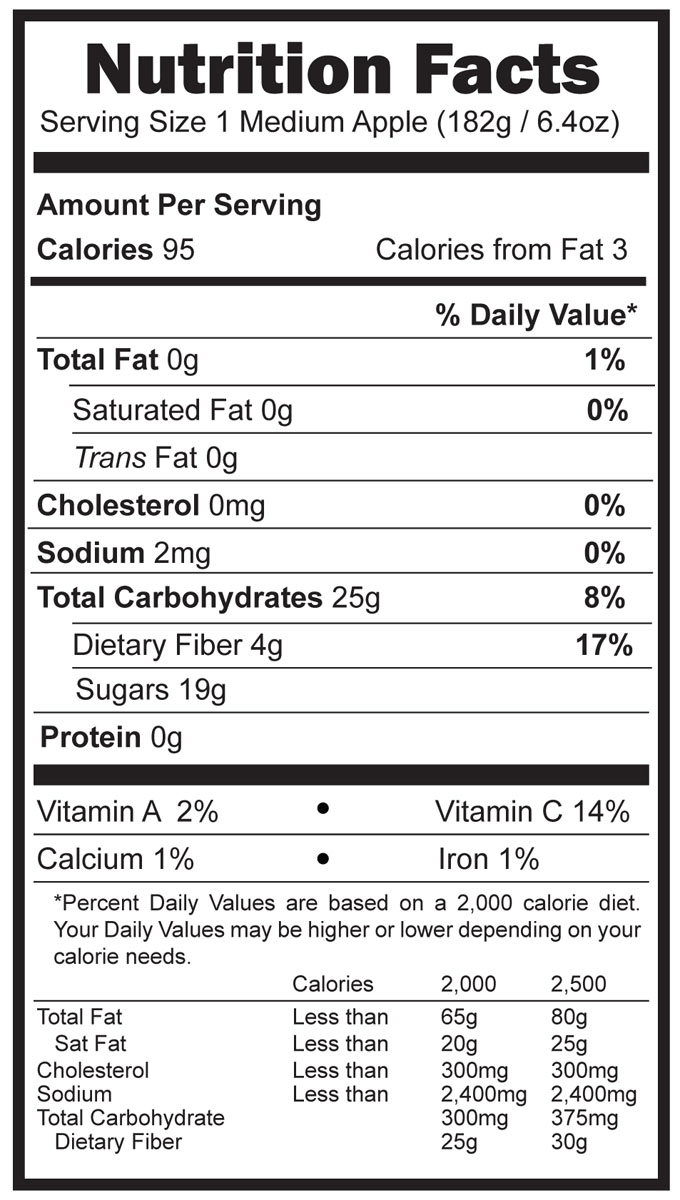
- The phytochemicals in apples provide as much antioxidant health-protected capacity as a mega-dose of vitamin C.
- Nutrition Summary: One medium apple, about the size of a baseball, delivers all this:
- One-fifth of the dietary fiber you should be eating each day for cardiovascular and digestive health. That’s more than a bowl of bran cereal – and better tasting, too.
- None of the bad stuff- no fat, no saturated fat, no trans fat, no sodium and no cholesterol. Apples are guilt-free!
- Small amounts of vitamin C, the best-known antioxidant vitamin.
- Small amounts of potassium, an electrolyte that’s key for heart health.
- All that, and only 80-100 calories depending on the variety.
Tie your Harvest of the Month to The Great Apple Crunch in October. Feature local apples on your breakfast line, on the salad bar, as a fruit option on the tray, or incorporated into recipes at breakfast and lunch, and in cafeteria tastings to celebrate the Great Apple Crunch! Decorate with apple-pumpkin and apple stamped sneezeguard cards or posters sharing apple fun facts and where your local apples were grown. Register for Apple Crunch here.
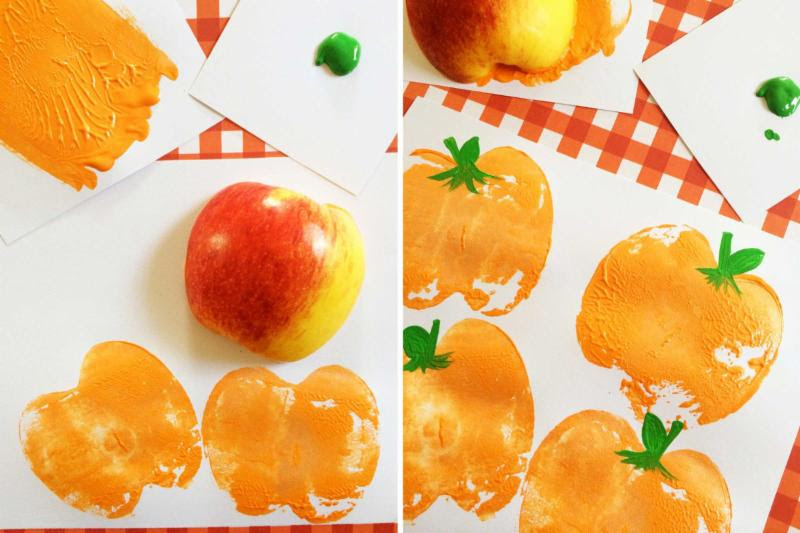

IN NOVEMBER, YOU CAN STILL ENJOY AUTUMN’S BOUNTY!

Add some autumn flair to your Harvest of the Month activities and share warm, seasonal dishes on your tray.
FEATURE LOCAL BUTTERNUT SQUASH
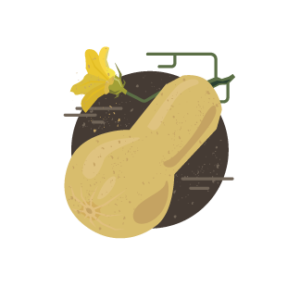 Welcome to late autumn! Temperatures are dropping and football and holiday celebrations are taking center stage as we move slowly into another Illinois winter.
Welcome to late autumn! Temperatures are dropping and football and holiday celebrations are taking center stage as we move slowly into another Illinois winter.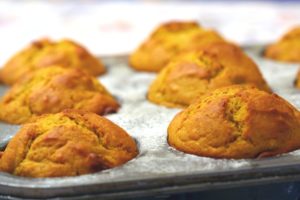 Featured Recipes:
Featured Recipes:HAVE YOU TRIED FEATURING FRESH HERBS IN YOUR FEEDING OR GARDEN PROGRAM?
Storage
How to Chop Herbs
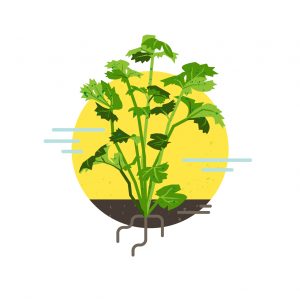 To maximize the flavor of your herbs you’ll want to chop them as finely as possible. The finer you chop your herbs, the more oils released and the more fragrant the herb will become. Delicate herbs like parsley and cilantro should be chopped right before use as they will lose their aroma quickly.
To maximize the flavor of your herbs you’ll want to chop them as finely as possible. The finer you chop your herbs, the more oils released and the more fragrant the herb will become. Delicate herbs like parsley and cilantro should be chopped right before use as they will lose their aroma quickly.When to Add Fresh Herbs
Which herb goes with which food?

The how-to primer for adding scratch recipes in increments and improving processed foods along the way.
Fun Fact: Illinois is the Pumpkin state!
Nutrition Facts
These nutrition facts can be added to middle/high school meal lines and cafeteria signage to educate, as well as, draw attention to your Harvest of the Month!
Sharing your Harvest of the Month activities with other school staff can lead to multiple exposures for your featured fruit or veggie. The more exposure kids have to a new fruit or veg, the more likely they are to accept it! Carrots may not be an issue with kids, but applying this technique to other, less popular veggies like pumpkin or dark leafy greens can be the difference between acceptance and total disinterest.

- Pumpkins are 90% water. And that makes them low calories. One cup of canned pumpkin only has 83 calories and only half a gram of fat.
- Pumpkins also have more fiber than kale, more potassium than bananas and are full of heart-healthy magnesium and iron.
- Pumpkin is also a good source of Vitamin E (Alpha Tocopherol), Thiamin, Niacin, Vitamin B6, Folate, Iron, Phosphorus, Vitamin A, Vitamin C, Riboflavin, Potassium, and Copper.
- Go to the Harvest of the Monthwebsite. Hover your mouse over the Feeding Sites tab at the top of the home page. Click on The Harvest in the drop down menu
- Click on Autumn to go to the seasonal list of fruits and veggies.
- Next, click on a veggie or fruit item, add your password if prompted, and the nutrition and fun facts are all there to copy and paste onto your line signage and wall posters!
Featured Recipes
Pumpkin Squares
Pumpkin Apple Butter
3-Ingredient Creamy Pumpkin Pasta


